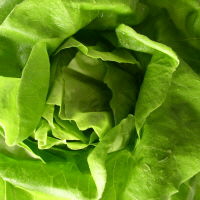
NPK ratios and the magic of Humic and Fulvic Acids
Compared to the weeks immediately previous, this past week was uneventful in our computer-controlled greenhouse. As you know, it all started off with murky water, progressed into an all-out power failure, and climaxed in a giant snowstorm that knocked out our computer system.
Thank goodness all that is (hopefully) behind us. This past week of calm has allowed us to catch our breaths. Chuck remarked that things were positively boring at the greenhouse, which is just the way I like it. (But I didn’t tell him that.)
“How can you say it’s boring?” I asked, playing the naïve ingénue. “We’re producing 400 heads of Boston lettuce per day, using the energies of two full time and two part time people. The rest is all done electronically, provided the system doesn’t conk out like it did last week.”
“Where’s your pioneering spirit?” I asked, wanting to get his goat. “Don’t you realize that this is the wave of the future? When people discover that we can produce massive amounts of vegetables year-round with a much smaller footprint than the field-farms of California, and we can provide much cleaner, healthier vegetables to boot, they’ll be building greenhouses like ours all over the place!”
Grudgingly Chuck agreed, and proceeded to mix this week’s nutrient mix with a big smile on his face. I think I managed to rekindle his enthusiasm. As he poured Micro in first, then Grow, he informed me that the Advanced Nutrients Nutrient Calculator actually suggests to additionally pour in a small quantity of Bloom, even at the vegetative stage. We choose not to do that, since we definitely do not want our lettuce to start flowering, under any circumstances.
“They do this in order to correct the NPK balance of the 3-part fertilizer,” said Chuck. “But I’ve figured out how to compensate for that by the other ingredients that I add to our nutrient mix. I add a larger quantity of Mother Earth Super Tea Grow, for instance, which has an NPK of 4.8-1.8-4.3. This boosts my Nitrogen to a level that is helpful for plants in a stage of vegetative growth.”
He went on to explain why Grandma Enggy’s Humic Acid and Fulvic Acid are both necessary to produce crisp, bright green lettuce. It seems that these ingredients are both derived from a richly organic substance known as “leonardite,” that is found deep within the earth. It has to be mined.
Grandma Enggy is a legendary figure, whose family has known the secrets of leonardite for generations. Their Extra Pure Humic Acid has grown award-winning flowers and vegetables for nearly 80 years. It is best to use the two products together, in order to obtain maximum benefit from both.
Used in conjunction with Grandma Enggy’s Seaweed Extract, these products add the best components of a rich organic soil to your soilless horticulture. Your hydroponic nutrient mix will buzz with organic joy when you add Grandma Enggy’s not-so-secret ingredients.
Humic acid derives its name from humus, the rotten organic material in rich soils. Humankind has known this “secret” for centuries. Rich, organic soil has always grown the best flowers and vegetables.
Chuck becomes enthusiastic as he describes the benefits of humic acid on our lettuce crop. “Humic acid helps increase the synthesis of chlorophyll, thus accounting for the bright green color of our butterhead lettuce plants. It helps the accumulation of reducable sugars, increases both nutrient uptake and the growth rate of our lettuce, increases root respiration, and enhances the protein and mineral content of all crops treated with it.”
“Fulvic acid is a nutritional substance that accelerates cell division, increases root formation, helps plant respiration, facilitates nutrient uptake, and increases the permeability of plant membranes. The three Grandma Enggy product used together have a synergistic effect that multiplies the individual benefits to a great extent.”
“Any draw backs?” I ask Chuck, who is by now bubbling with enthusiasm. “Well, humic acid is rich black in color and has the ability to stain. With our floating polystyrene boards separating the nutrient solution from the growing heads of lettuce, the black solution stains only the roots of the lettuce, which is not a problem.”
“Occasional splashing might result in a head of lettuce being stained and discarded, but with extra care this kind of spoilage can be avoided.”
I am very glad to hear that even the perfect products sold by Advanced Nutrients can have an occasional imperfection, albeit a minor one.
posted by silvio @ 7:16 PM
0 comments
![]()

0 Comments:
Post a Comment
<< Home